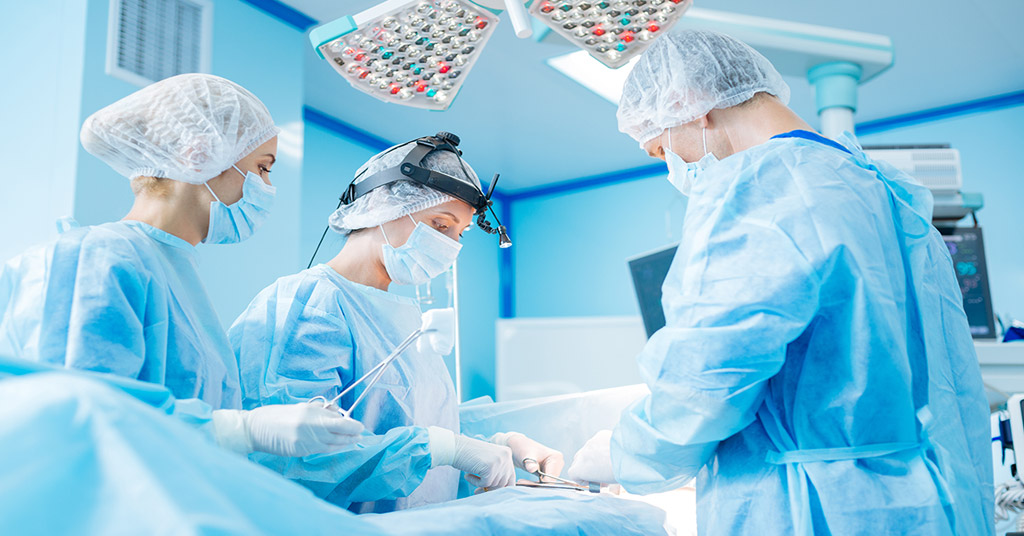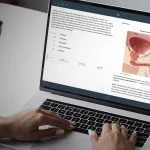If you’re heading into your surgery rotation, you’re probably feeling a mix of excitement, nerves, and curiosity. It’s one of the most demanding rotations you’ll complete but also one of the most rewarding. From long hours in the operating room to fast-paced learning moments, surgery will stretch you physically, mentally, and emotionally.
Here’s what you need to know before your surgery rotation begins — from practical tips to mindset shifts that can help you succeed. To help you feel more prepared, we spoke with Sarah, a clinical-year PA student who has since become a practicing plastic surgery PA. Her honest, experience-based advice offers the kind of insight every PA student deserves when stepping into the OR for the first time.
Why Your PA Surgery Rotation Is Worth the Challenge
Your surgery rotation will stretch you, but it will also shape you. It’s a rotation that asks a lot of you, but gives just as much in return. It’s fast-paced, hands-on, and filled with opportunities to grow as a clinician, team member, and communicator. Knowing what to expect can help you step into the OR with resilience, clarity, and a readiness to learn.
The fast pace and steep learning curve can initially feel overwhelming, especially if you’re used to excelling. You may not always get direct feedback, and when you do, it might be blunt. Remember that growth often comes from discomfort, and it’s OK not to have all the answers immediately.
Some surgeries last 8-10 hours, and days can run over 14 hours, depending on the case. You’ll spend a lot of time standing, moving patients, and assisting in the OR. Rest when you can and take care of your body before each shift and on the clock. You’ll need the extra energy.
You’ll be balancing case prep, rotation exams, and in-the-moment learning. Preceptors may quiz you in the OR, so it helps to review procedures and anatomy beforehand. Preparation builds confidence, and confidence enables you to stay present.
Surgery may stretch you, but it also sharpens your clinical instincts and teaches you to think on your feet. Many students finish this rotation feeling more capable than when they started.
This was the hardest rotation I’ve ever had, but also the most rewarding. I came out of it more confident and capable than I ever expected.”

How to Prepare for Your Surgery Rotation
Preparation is key to building confidence and making a strong start on your surgery rotation. Here are the most important things to focus on before your first day.
Review the Basics
- Surgical anatomy and procedures: Review essential anatomy and common operations such as appendectomies and laparoscopies. Use flashcards to quickly reinforce key concepts before seeing them in practice.
- Sterile technique: Learn how to scrub, gown, and glove properly, and understand how to move in the OR without breaking sterility.
- Suturing and knot-tying: Practice techniques such as deep dermal and subcuticular sutures. Get comfortable with instrument ties, and try 2- or 1-handed ties if you're ready.
- Textbooks and study tools: Use a high-yield Q&A resource to help you review surgical concepts and reinforce clinical reasoning before stepping into the OR.
Surgical Recall helped me prep for pimping questions, and I liked how it was organized by surgery. I also used the Touch Surgery app, which walks you through each case step-by-step and even quizzes you at the end.”

Plan Ahead
- Contact your preceptor early: Send a brief email introducing yourself before the rotation begins. Ask about expectations, arrival time, and any recommended prep.
- Map out your commute: Know exactly where to go, how long it’ll take, and where to park. Plan to arrive at least 15 minutes early.
- Pack your essentials: Comfortable shoes, snacks, water, a pocket notebook, and a small reference book will help keep you sharp throughout the day.
- Prepare emotionally: Surgery rotations can be physically and emotionally demanding. The hours are long, and the learning curve is steep. Before your rotation starts, set realistic expectations for yourself so you don’t expect perfection in the moment.
What to Do Before You Step Foot in the OR
Once your rotation begins, every OR experience is a chance to build skills and earn trust. It’s a fast-paced, high-stakes environment, but showing up prepared helps you feel grounded and ready to contribute. The moments leading up to surgery are key to setting the tone for how the rest of the case will go.
It’s good practice to grab your own gown and gloves before the surgery. Some places don’t have anyone available to help you gown and glove, so be prepared to do it yourself.”

Arrive at least 30 minutes early and check the OR schedule as soon as you can. Look up the case list, confirm which room you’ll be in, and ask staff if there have been any updates. Things often change at the last minute, so flexibility is part of the job.
Once you’re in the right room, introduce yourself to the scrub tech and circulating nurse. Let them know who you are and who you’re assisting. Additionally, it’s thoughtful and professional to hand the scrub tech an unopened gown and gloves so they’re ready when it’s time to scrub in.
Every OR has a flow. Be helpful and conscious of whether you’re getting in the way. And if you’re not sterile, don’t touch anything blue!”

After introductions, add your name to the board and ask how you can help with setup. Before scrubbing, check that your mask, headcover, and eye protection are on. Scrub in after the patient is intubated and positioned, but before your preceptor does.
What to Expect During Your Surgery Rotation
Once you’re scrubbed in, your role shifts from observer to participant. You may not be leading the case, but your attention, body language, and responsiveness all impact the flow of the procedure. The more in tune you are with the team’s needs, the more opportunities you’ll have to engage and learn.
After each case, I’d write down the questions I was asked so I could look them up later. You can’t take notes in the OR, so you have to make a mental effort to remember.”

Follow the lead of the surgeon and scrub tech, and only touch what you’re instructed to. You may be asked to suction, retract, cut sutures, or follow a running stitch — small tasks that matter greatly. Keep your movements controlled (your front is sterile, your back is not), and be mindful of where you turn.
Ask questions when the timing is right, and avoid interrupting during critical steps. Expect to be quizzed. As the rotation goes on, you’ll start to notice patterns in the types of questions you’re asked. Use those trends to focus your study time.
Even if you get every question right, your preceptor will keep asking until you miss one. They want to teach you something. If they give you the answer, remember it, as you’ll probably get asked again.”

After the case, take time to look up anything you didn’t understand, especially topics your preceptor emphasized. Use that feedback to guide your review and deepen your clinical understanding. This will help you fill in knowledge gaps and track your progress.
Being in the OR can feel intense, especially in the beginning. But over time, you’ll start to anticipate what’s needed, read the room more intuitively, and find your rhythm as a surgical team member in training.
You’ll be challenged every day, but you’ll also grow every day. Trust yourself, show up prepared, and let each case teach you something new.”







